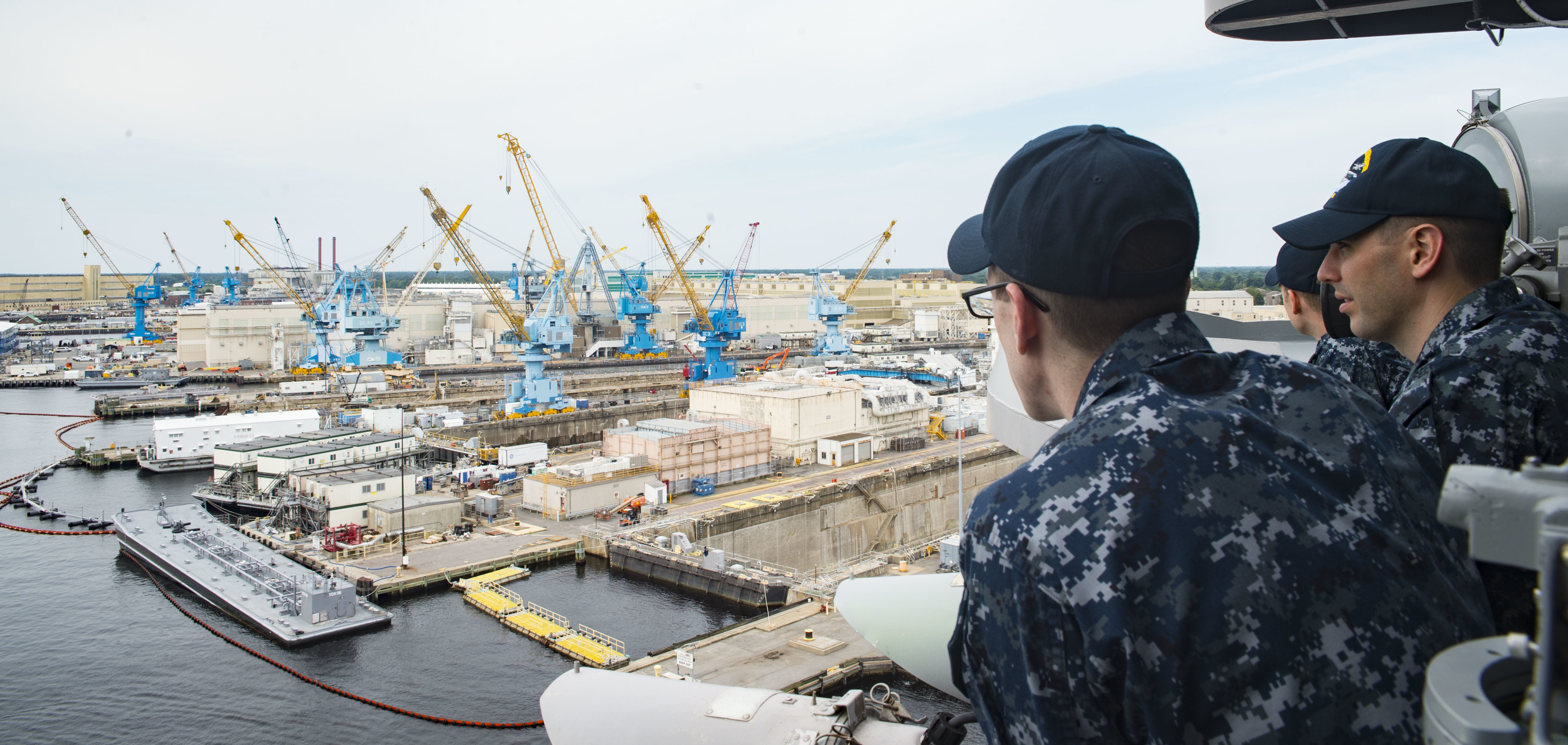
The Navy is creating “digital twins” of its four public shipyards so engineers can conduct modeling and simulation and identify ideal new configurations for the yards to boost productivity.
As part of its 20-year, $21-billion effort to modernize and optimize the four yards, the Navy is in the early stages of this simulation work, meant to show potential new layouts of the yards’ welding shops, pump shops, material storage, office spaces and more could contribute to better workflow and reduced man hours.
The Shipyard Infrastructure Optimization Plan (SIOP) effort will also include repairing and enhancing dry docks and replacing aging capital equipment, but the Navy hopes to hash out the layout issues early on to avoid installing large capital equipment and then having to move it a few years later.
“The Shipyard Infrastructure Optimization Plan articulated a vision that shipyard infrastructure has three interdependent components: the dry docks, the facilities and the capital equipment; and that these configurations are fundamentally linked to the shipyards’ ability to execute the mission they are tasked to do,” Steven Lagana, program manager for the SIOP effort at Naval Sea Systems Command (NAVSEA), said in a Navy news release this week.
“We are utilizing modeling and simulation as a tool to integrate these components to better inform the desired infrastructure layout. Through this, the Navy will be in a better position to make meaningful, long-lasting investments that not only address the condition of the facilities and equipment but also change the way the work is conducted. Once we’re finished, the Navy will recover more than 300,000 work days per year, every year.”
A first step is the digital twin effort, where the yards as they exist today will be put into a modeling and simulation system that can then generate numerous options to optimize work flow.
Assistant Secretary of the Navy for Research, Development and Acquisition James Geurts told reporters last week that a pilot program is taking place now at the Pearl Harbor Naval Shipyard and Intermediate Maintenance Facility in Hawaii. A master planner there has designed a notional new design for the yard and is running simulations on transit times for various types of personnel to understand what shops, offices and other facilities need to be located near what other facilities to help optimize travel flow.
The impact of each individual having to walk an inefficient path from location to location to do their job may seem minute, but when multiplied by the total workforce over the span of a maintenance availability, an inefficient yard design can extend the amount of time it takes to repair a ship quite a bit.
NAVSEA commander Vice Adm. Tom Moore told USNI News previously that at Norfolk Naval Shipyard in Virginia, “the workforce walks the circumference of the earth every day getting to and from the worksite.” He said a 6-percent inefficiency in their time spent walking around the yard that could be eliminated with a more appropriate flow from the shops down to the drydocks.
The SIOP program office is holding its first industry day on April 8 at Washington Navy Yard, and the event is filled to capacity.
“We’re sold out,” Lagana said in the news release. “We have more than 100 companies from 19 states and the District of Columbia who are coming to hear about the program and see how they can be part of this once-in-a-century team that will deliver the shipyards the Navy needs.”





